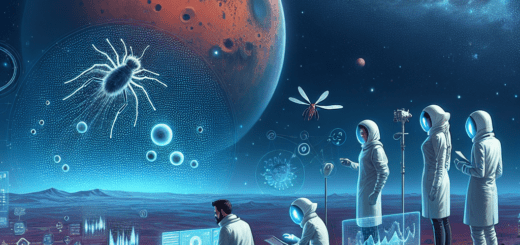Could Alien Life Be Closer Than We Think?
Throughout history, humans have been fascinated by the idea of extraterrestrial life. From ancient myths and legends to modern science fiction, the concept of aliens visiting Earth has captured our imaginations. But could alien life actually be closer than we think?
The search for extraterrestrial life has been a topic of intense scientific research for decades. Scientists have explored the possibility of life on other planets within our own solar system, such as Mars and Europa, a moon of Jupiter. They have also scanned the skies for signs of intelligent life beyond our solar system, using powerful telescopes to search for radio signals or other evidence of alien civilizations.
One of the most promising places to search for alien life is on exoplanets, which are planets that orbit stars outside of our solar system. In recent years, astronomers have discovered thousands of exoplanets, some of which are located in the “habitable zone” around their host stars – the region where conditions are right for liquid water to exist on the planet’s surface. Water is considered a key ingredient for life as we know it, so finding a planet with liquid water increases the chances of finding alien life.
In fact, in 2017, scientists made a groundbreaking discovery when they detected an Earth-sized planet orbiting a nearby star called Proxima Centauri. This planet, known as Proxima b, is located in the habitable zone of its star and could potentially harbor liquid water. While the search for alien life on Proxima b is still ongoing, this discovery has sparked excitement among scientists and the public alike.
But what if alien life is not just limited to distant exoplanets? Some scientists believe that microbial life could exist closer to home, right here on Earth. Extremophiles – organisms that thrive in extreme environments such as deep-sea hydrothermal vents, acidic hot springs, or frozen Antarctic lakes – have expanded our understanding of where life can exist. These organisms have adapted to survive in conditions that were once thought to be inhospitable, leading some scientists to speculate that similar extremophiles could exist on other planets or moons in our solar system.
For example, in 2020, researchers announced the discovery of phosphine gas in the atmosphere of Venus – a possible sign of microbial life. While this discovery is still controversial and further research is needed to confirm the presence of life on Venus, it has raised intriguing questions about the potential for alien life in our own cosmic backyard.
In conclusion, while the search for alien life remains a challenging and complex endeavor, recent discoveries have shown that the possibility of finding extraterrestrial life is no longer just a fantasy. Whether it’s on distant exoplanets, within our own solar system, or even here on Earth, the quest to find alien life continues to inspire scientists and spark our curiosity about the mysteries of the universe. Who knows – perhaps one day we will make contact with beings from beyond our world, proving that alien life is closer than we ever imagined.













